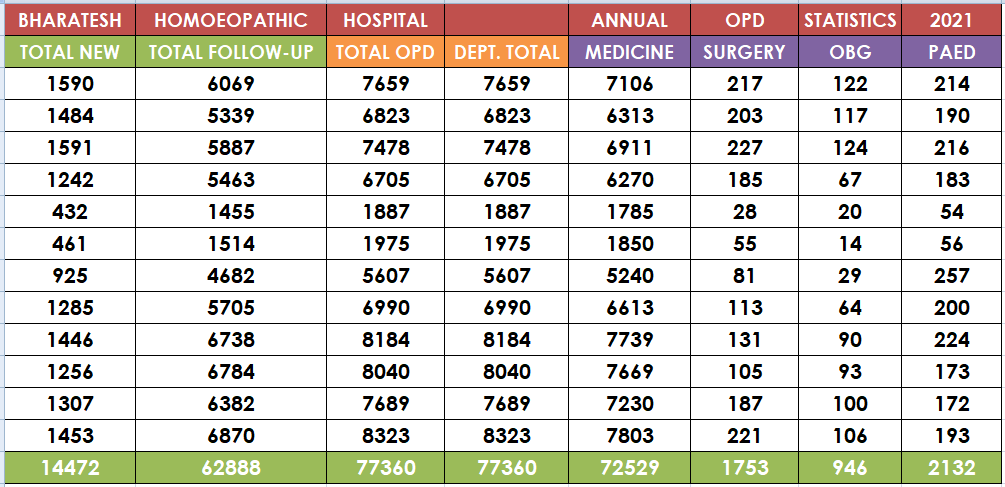Citation: Parsons S. HIV Beliefs Among African Americans with HIV/AIDS in the Deep South Can Time Heal Old Wounds? J Health Care and Research. 2021 May 11;2(2):70-84.
Copyright © 2021 Parsons S. This is an open-access article distributed under the Creative Commons Attribution License, which permits unrestricted use, distribution, and reproduction in any medium, provided the original work is properly cited.
Keywords: HIV Rumors, HIV/AIDS, African Americans, Louisiana, Deep South
Abstract
This study explored rumors about HIV among HIV+ African Americans in Louisiana, comparing the results of surveys conducted in 2000/2001 and 2010/2011. This investigation sought to determine if the passage of time would diminish malicious intent and benign neglect beliefs. The study employed quantitative descriptive statistics to produce the comparison. This research should be considered exploratory only because of the stated limitations. The results indicated that the benign-neglect belief of government truthfulness about the disease had not diminished in the decade. In contrast, the strength of belief in the malicious-intent rumor of HIV/AIDS as genocide had declined. The study further examined relationships between the HIV beliefs and certain characteristics of the samples. Bivariate analyses revealed that education was not related to HIV beliefs in 2000/2001 but was related to the HIV/AIDS as genocide in 2010/2011. Further, emotional well-being was mildly related to HIV beliefs in both samples. Several recommendations are offered for future research. Although this study frequently used the term “conspiracy” – the common nomenclature for this type of research, the author joins with others to caution researchers to rethink labeling these beliefs among African Americans as conspiracies. That label too easily casts Black Americans in a light as being paranoid rather than understandably suspicious considering the lived experiences of that group in the Deep South.
Introduction and Background
This quantitative descriptive study examined the strength of belief in HIV rumors among HIV+ African Americans using data collected in 2000/2001 and 2010/2011 from residents in the metro area of Baton Rouge. This investigation sought to determine if a lapse in time could diminish malicious intent and benign neglect HIV beliefs. Baton Rouge gained national attention from 2000 to 2010 because of the alarming rate of HIV and AIDS cases. In 2010, Baton Rouge ranked first in estimated AIDS case rates and African Americans represented 78% of the newly-diagnosed AIDS cases and 74% of the newly-diagnosed HIV cases in the state [1]. The disproportionate impact of HIV/AIDS on African Americans continued into the next decade with that racial group representing nearly three-fourths of newly-diagnosed AIDS and HIV cases, although comprising less than one-third of Louisiana’s population. Of any group, African Americans have reason to be suspicious of American institutions.
The year 2021 was ushered in with a mob storming the US Capitol, egged on by the president and ignited by the belief that the presidential election had been stolen. Multiple extremist groups participated in the insurrection with the QAnon conspiracy believers, center front. QAnon embraces not only the conspiracy of a stolen election but a wide variety of other beliefs hovering around a day of reckoning of those controlling the “Deep State” government [2]. Deep State conspiracy theorists may be on the political anti-government fringe, but half of Republicans still contend that the election was stolen from Trump [3].
Beliefs in covert or overt US government manipulations and cover-ups are not new and sometimes even probable. Nonetheless, there is a line that can be drawn between fake-landing-on-the-moon versus conspiracies of malicious intent [4] – the willful agenda by government to harm or even eradicate certain groups. Such malicious beliefs and mistrust can have far reaching consequences for the believers. Prior studies have documented that distrust in government can negatively alter health behavior and decisions [5-7] including HIV treatment [8-11] and, most currently, compliance with Covid-19 protocols and willingness to be vaccinated [12,13].
The “mysterious” AIDS origin first plaguing homosexuals, Haitians, hemophiliacs and heroin users (the 4H disease) [14] was fodder for the rumor mill. Two years after HIV was identified as the cause of AIDS, Black women comprised 51% of all AIDS cases among women, and by 1990, African Americans surpassed whites in new infections and this disparity remains today [15]. Not surprisingly, rumors about the suspicious inception of HIV/AIDS sprouted in the Black community and by 1997/1998, the grapevine among African Americans was up and running with a notable percentage of Blacks believing in a genocidal conspiracy. [4,16-19]. The 2008 pulpit recording of Barack Obama’s pastor, Jeremiah Wright, implicating government in the HIV/AIDS extermination of Blacks [20] shocked White America but not Black Americans. Study upon study in the early decades of the epidemic confirmed that HIV/AIDS conspiracy beliefs were common among African Americans [21-26].
What matters to reducing HIV rumors? Research on these beliefs is still in its infancy [27] with few insights offered on whether these beliefs can change; and, if so, why. Rational arguments may help as scientific information becomes available, and ridiculing may work on some myths and in some cultures [28]. However, it is indefensible and counter-productive to attempt to delegitimize or to label these beliefs as irrational for African Americans [29] considering the glaring evidence of government’s complicity in breaches of medical ethics and connecting the dots from slavery to current discriminatory treatment.
Medical rumors among African Americans are the surface manifestation of deep-rooted distrust, and while this author agrees that public health officials should try to “patiently” refute medical conspiracy beliefs, that approach could produce a “backfire effect” and increase skepticism [30]. Greater education may or may not matter to the belief in conspiracy rumors, but as Simmons and Parsons [31] discovered, the level of education of African Americans in Louisiana was not a buffer against believing rumors, such as believing in HIV/AIDS as genocide of Blacks. The same findings have been confirmed by other studies as well [24,26].
The current study sought to determine if time is a possible antidote in reducing the intensity of HIV beliefs among African Americans with HIV. Findings in a companion article by Parsons [32] indicated that a decade made no difference in believing HIV/AIDS to be a punishment from God. However, disease-inception conspiracies are different. The lack of scientific understanding of devastating diseases such as HIV/AIDS results in the likelihood of “folkloric” explanations to bridge the vacuum [33]. A mysterious fatal disease can incite insecurity and fear [34] with the resulting rumors often more hazardous than the disease itself [35]. The question remains – does time reduce such beliefs?
Why could time potentially create distance in a medical rumor? First, 10 years may matter because of greater public health efforts, in that decade, to include consumers on local and regional boards as well as to place more emphasis on support groups. Consumers with HIV also became more visible and active in peer-support and outreach endeavors, thus, building credible bridges to share information with the community. With those efforts, it is likely that a decade made a difference in opportunities to participate in forums and speak openly about beliefs without being judged [36]. Such group member interactions could further the “sense making” process of rumors with an eventual loss of interest in the rumor [37]. Second, time alone may lessen medical rumors. For example, Bierwiaczonek et al. [38] collected longitudinal data on Covid 19 conspiracy beliefs and found that those beliefs decreased over time. Third, while the evidence is slim, the stigma of certain disorders may decrease over time or with interventions [39-42]. HIV stigma decreased in the United States in the decade prior to 2000 [43], and a reduction in stigma could potentially reduce misconceptions about HIV [44].
While the intensity of rumors may lessen with time, it is equally possible that the persistence of HIV rumors among African Americans has not diminished in a decade. Early in the HIV epidemic, a sizable percentage of African Americans believed HIV rumors and the general distrust of American institutions was fertile ground to quickly root rumors about HIV. In-depth interviews with African American veterans, receiving HIV treatment through the Veterans Health Administration, revealed the resilience of both the HIV conspiracy beliefs and the grapevine echoing those beliefs [45]. Although studies rarely track HIV conspiracy beliefs over time, publications in the past decade still provide ample evidence of the persistence of these beliefs [46-52].
Methods
Materials:
Data were collected through multipurpose surveys of participants in the Louisiana Public Health Region II metro area of Baton Rouge, Louisiana, in 2000/2001 and again in 2010/2011. The questions examined in this study were attached to general needs assessment surveys. As a part of the 2000/2001 survey field testing, local practitioners and administrators who work in HIV services, or who serve a large HIV+ population, were asked to comment on the draft instrument. Revisions were made to the instrument, per the comments received. The survey was last field-tested using a small number of consumers of HIV/AIDS services. Both data collections extended approximately nine months and both were approved by the university IRB. In compliance with the IRB requirements, prior to the administration of any survey, the reason for the study was explained, voluntary participation was emphasized and privacy provided for survey completion. A small incentive was offered to each participant. Approximately half of both samples requested that the questions be read to them and the responses recorded by the investigators.
Demographic questions were included but without any identifier that could personally link the participant to the paper survey. Among those respondent characteristics questions were age/year of birth, race/ethnicity, HIV risk factor, gender, education, emotional well-being, and treatment adherence. Two questions in the surveys, formatted from strongly disagree to strongly agree, examined the strength of belief in rumors about HIV/AIDS and were adapted from the research by Thomas and Quinn [19] and Quinn [53]: The government is telling the truth about HIV/AIDS and I believe that AIDS is intended to wipe blacks off of the face.
Samples and Location:
The 2000/2001 survey data were collected from HIV+ individuals at HIV/AIDS service providers, including a food bank. Participants for the 2010/2011 survey were solicited from both HIV/AIDS service providers and from health fairs held in at-risk neighborhoods in Baton Rouge. It is unknown if any of the participants in the 2000/2001 survey also responded to the 2010/2011 survey. Consider that the survival rate for new AIDS diagnosis in 2001 was 74% after 36 months and for those 50 and older the rate plummeted to between 46% to 69% depending on the age, and if injection drugs were involved the survival rate dropped again [1].
The Louisiana Public Health Region II, in 2010, included both urban and rural parishes (counties): East Baton Rouge, West Baton Rouge, West Feliciana, East Feliciana Ascension, Iberville, and Pointe Coupee. Most of the respondents for both surveys resided in the city of Baton Rouge. However, among the data collected at Region II HIV/AIDS service providers in Baton Rouge, rural residents would have been represented in those accessing those services.
Louisiana is a state long plagued by poverty, poor educational outcomes, segregated schools and neighborhoods, health care disparities, high incarceration rates, racial inequality, sexually transmitted diseases and HIV. As of 2010 [1], 17,679 (15,178 urban and 2,501 rural) persons were reported to be living with HIV in Louisiana and of those approximately half had been diagnosed with AIDS. Over one-third of those with an HIV diagnosis in 2010 were not in medical care for the disease [1]. Notable also was the high rate of STDs, according to the Louisiana STD/HIV Program Report [1]: first in the rate of primary and secondary syphilis and congenital syphilis, second in the rate of gonorrhea, and third in the rate of chlamydia.
In 2010, the HIV diagnosis rate per 100,000 was 46.0 in the Baton Rouge metro area with a total population in Region II of 663,255 [1]. In that same year, Baton Rouge had the highest AIDS diagnosis rate of all regions in the state [1]. The new HIV diagnosis numbers in the Baton Rouge region per year were relatively stable from 2001 to 2010 (302 and 305, for the latter); the same was true for the new AIDS diagnosis for the region (240 and 238, for the latter) [1]. Most of those new HIV and AIDS diagnoses for Region II were in East Baton Rouge parish, where the city of Baton Rouge is located [1].
Analysis
Profile of the Samples:
Only descriptive statistics (percentages and bivariate statistics) were used to analyze and display the results. First, the analysis will present demographic characteristics of both samples, followed by the comparison of HIV beliefs in the two data collection periods. Last, a small section is dedicated to exploring the relationship between HIV rumors and two concepts of interest to the current body of literature – education and psychological well-being.
Three hundred and six surveys were collected 2000/2001, with African Americans representing the majority of the respondents. Two hundred and forty-four responded in 2010/2011 with the majority of those African American and those with HIV. The final tally of those African American HIV+ participants was 124 for the 2000/2001 sample and 169 for the 2010/2011 sample in the metro Baton Rouge area. For the primary analysis of the two samples, the categories of disagree and agree were collapsed with “unsure” responses deleted. The rumor belief data for both surveys were archived by the researcher until this current comparison.
Both surveys inquired about age with birth year in the 2000/2001 sample and age categories in the 2010/2011 sample. There was a range of 43 years from the oldest to the youngest in the 2000/2001 sample. Of the 124 responding, 24 were younger than 30 and 21 were 50 or older at the time of the data collection. The mean and median birth year was 1961/1962 for that first sample. Of the 2010/2011 sample, the plurality (49, 30%) were 35 – 44 years old and only 9% (15) were 24 years old or younger with 13% (22) 55 years or older. The sample was somewhat older than the state statistics for those newly diagnosed with HIV 55 years of age or older (8.4%) but reasonably close to the percentage of those 55 and older at the time of AIDS diagnosis in the state (12%) in 2010 [1].
Educational level was low in the two groups; nonetheless, 34% of the 2010/2011 sample did not graduate from high-school compared to 44% the previous decade. Most of the respondents were unemployed. Approximately 10% (12) of the 2000/2001 sample reported full-time employment and 13% (15 of 118) reported part time employment. Eighty-four percent of the 210/2011 sample reported not being employed full time (139) and few (14) reported being part-time employees at the time of the data collection.
There were few meaningful differences between the two samples in terms of their perceived health status. Among the 2000/2001 group, 15% (18 of 119 responding) and 17% (28 of 164) of the 2010/2011 reported their health to be excellent. There was a difference between the two samples in terms of emotional well-being. Twenty-one percent (of 121 responding in the 2000/2001 sample) and 33% (of 131 responding in the 2010/2011) agreed that they were always happy. Interestingly, of the 2010/2011 sample, the plurality (43% of 160 responding) agreed that the quality of life was the same pre- and post-HIV diagnosis. That question was not asked the prior decade.
There were approximately the same number of males as females in both samples of HIV+ African Americans. For more information on the demographic details of the surveys, please see Parsons [32] and Parsons et al. [54]. Of the 2000/2001 sample, one-third reported injection drug use (IDU) as a disk factor — approximately the same percentage of exposure was reported by the state that year [55]. Only 16% of the 2010/2011 sample reported IDU as a risk factor. In 2009, IDU accounted for 13% of new HIV diagnosis among African Americans and 20% of persons, regardless of race, living with HIV [56]. Questions on incarceration were not asked in the 2000/2001 survey and, as Parsons reported in 2020 [57], approximately half of the 2010/2011 sample had been incarcerated.






